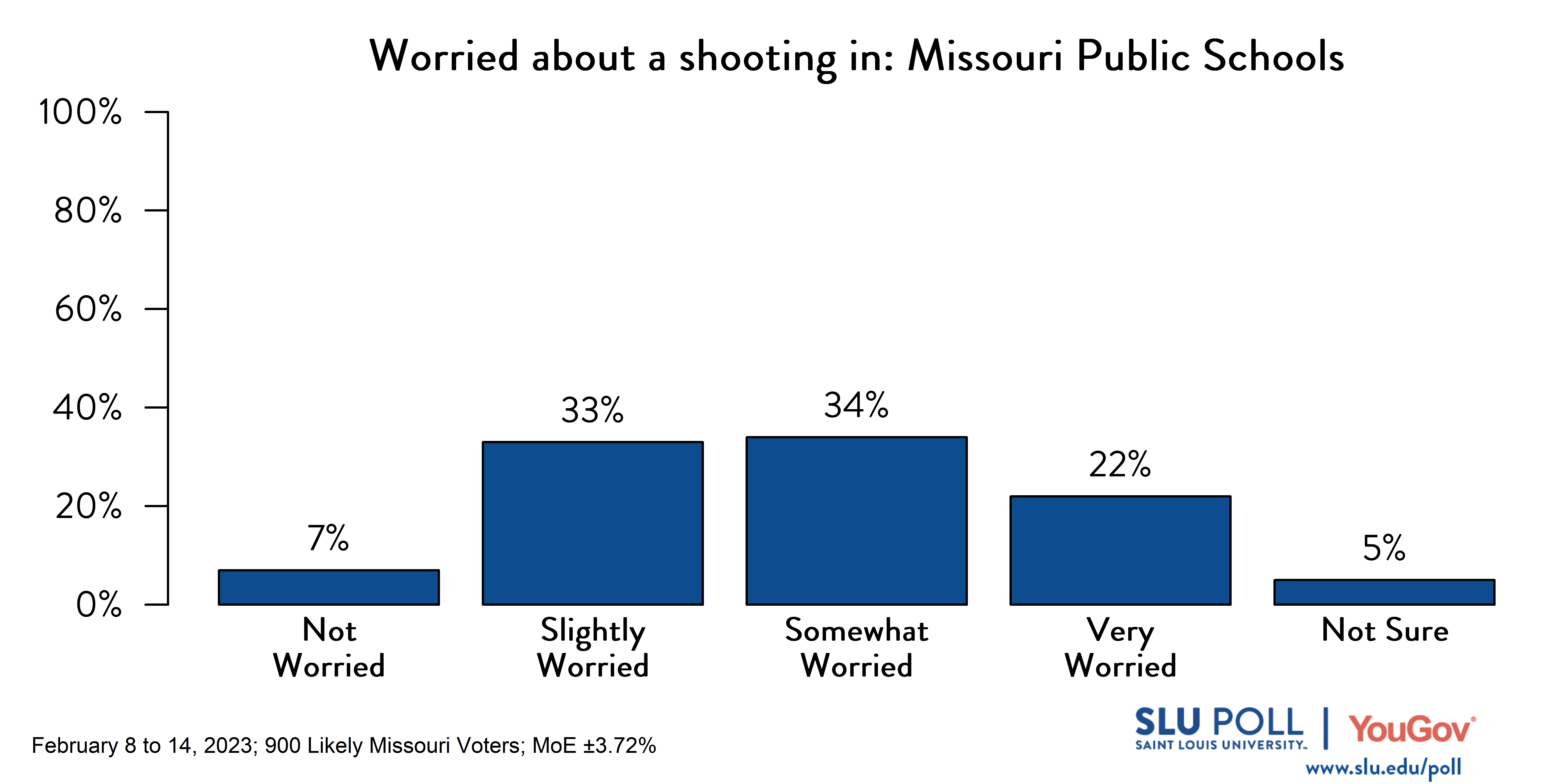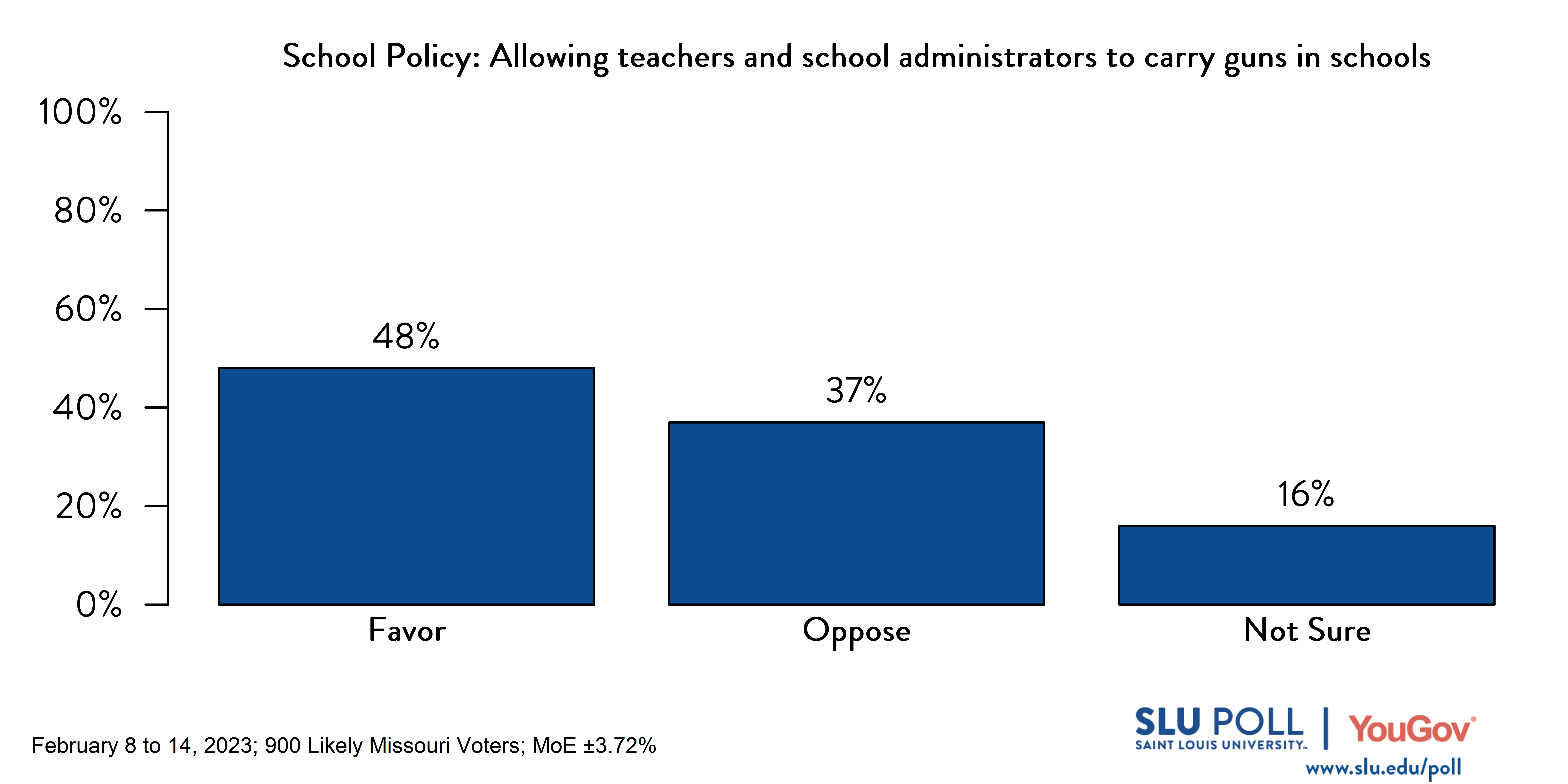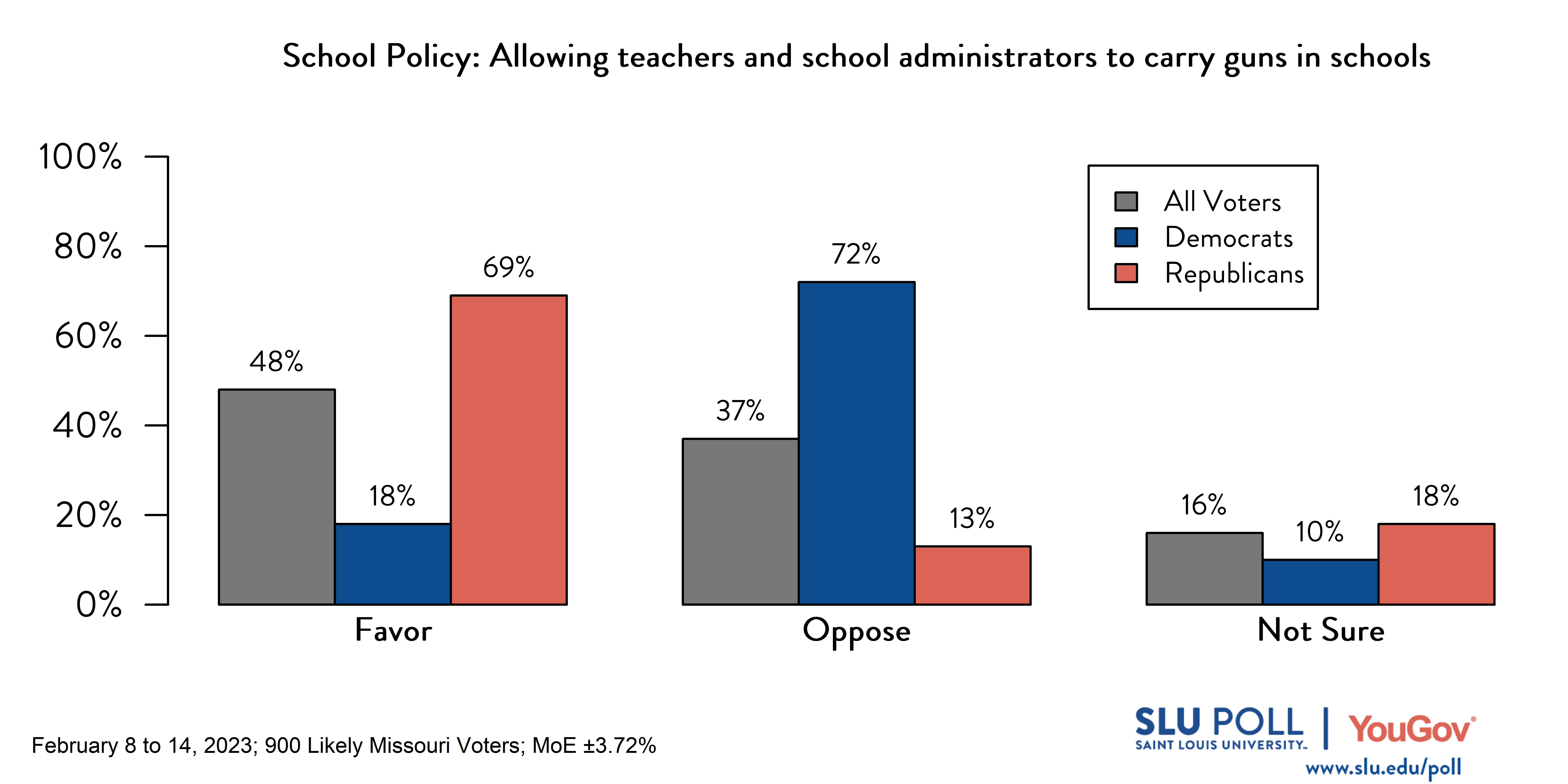School Safety Worries and Policies in Missouri
By Ashley Donaldson Burle and Abigail Burrola
In 2022, the number of school shootings surpassed the level of any prior year and 133 school shootings caused injuries or fatalities in the U.S. In October 2022, a school shooting at Central Visual and Performing Arts High School in St. Louis caused the death of a teacher and student. Amid these circumstances, school safety has become a top educational issue in our nation and Missouri. The SLUPoll/YouGov February 2023 poll asked Missourians about their concern for a school shooting happening in their local public schools as well as Missouri public schools overall. Results indicated nearly half (49%) of Missouri voters rated the safety at public schools across Missouri as fair or poor and a majority (56%) of voters reported they were somewhat or very worried about a shooting happening in Missouri public schools. However, only 37% of Missouri voters indicated they were worried about a shooting occurring in their own local public school. These findings suggest voters have heightened concerns about school safety statewide but are not as worried about a shooting occurring in their own backyard.
Concerns for school safety have led states to introduce hundreds of bills related to K-12 school safety each year, 36 of which were enacted in 2022. While some of the bills have been omnibus, covering many topics, others have been more narrowly focused on specific issues such as guns in schools and police officers (often referred to as school resource officers). When voters were asked if they supported specific proposed school safety requirements, the policy with the highest overall level of support (83%) was requiring the use of cameras and video security in schools, followed by requiring public schools to have police officers on campus (77% in favor) and requiring metal detectors in all schools (63% in favor). At least 57% of Republicans, Democrats, and Independents supported each of these school safety measures indicating bipartisan support.
In May 2022, schools across all 50 states became eligible for $2 billion in grants targeting school safety initiatives and mental health services. A $2 million grant has been awarded to the University of Missouri to support 26 rural schools, which tend to have fewer resources for school safety, to monitor online activity for threatening language or images.[2] During his 2023 State of the State address, Missouri Governor Mike Parson proposed $50 million for school safety grants and stated, “It’s about keeping kids safe, keeping teachers safe, keeping administration safe."
One of the hotly debated policies on school safety is allowing teachers and school administrators to carry guns in school. In early February 2022, Missouri lawmakers debated HB 70 which would expand the state’s school protection officer program to any personnel, not just teachers and administrators. This bill was recently passed by the Elementary and Secondary Education Committee and Rules - Legislative Oversight Committee. Proponents of the bill say it is intended to help rural schools which often do not have access to school security guards and timely law enforcement.
Poll respondents were largely divided over this issue. Almost half (48%) of voters were in favor of this policy, while 37% opposed it, and 16% were unsure. There were dramatic differences in support among race and party affiliations. For White respondents, 50% favored this proposal and 34% opposed it. Support among Black respondents is about half that, with only 26% supporting this policy and a majority (64%) opposing it. Support among all non-White respondents was slightly higher at 32%.
Levels of support by political party affiliation resulted in nearly opposite levels of support and opposition between Democrats and Republicans. For Democrat respondents, 18% favored allowing teachers and school administrators to carry guns in school and 72% opposed. Levels of support were essentially flipped among Republicans, where 69% favored the policy and a mere 13% opposed it. Allowing teachers and administrators to carry guns was the school safety policy that saw the largest partisan divide. Regionally, more voters opposed the measure in the St. Louis and Kansas City regions, 50% and 44% respectively, while at least 54% of voters in the Northwest, Southwest, and Southeast regions of Missouri supported the policy. This finding indicates areas with higher rural populations have a majority who support the policy, aligning with proponents of proposed HB 70.




















